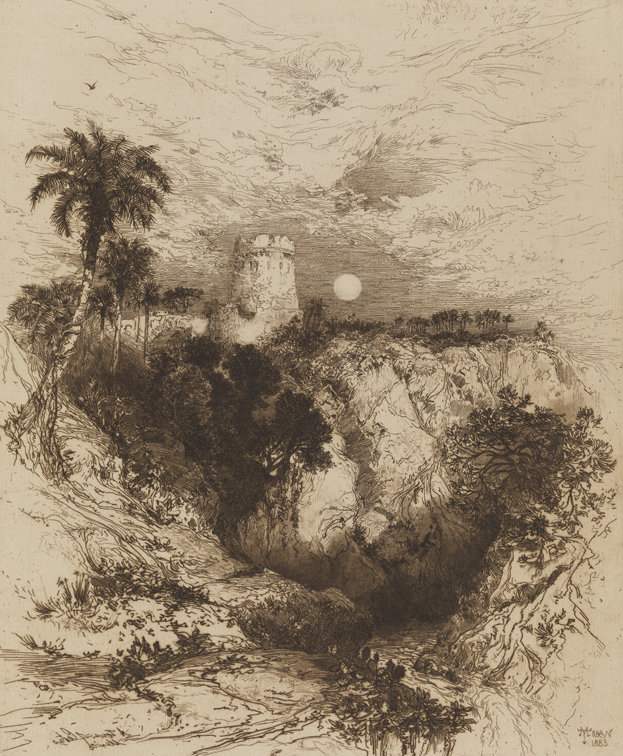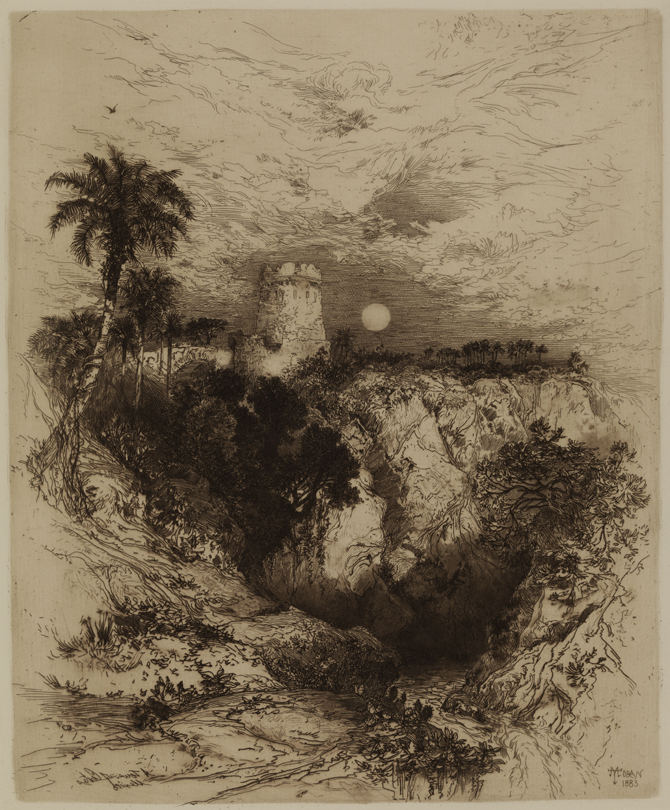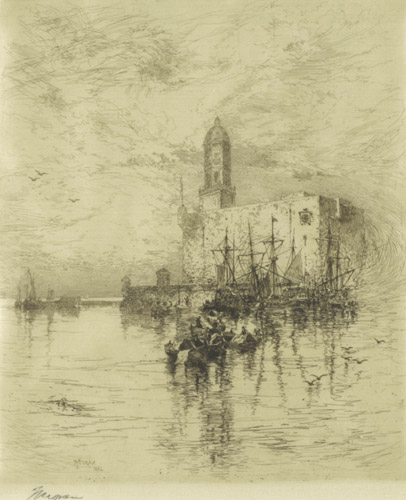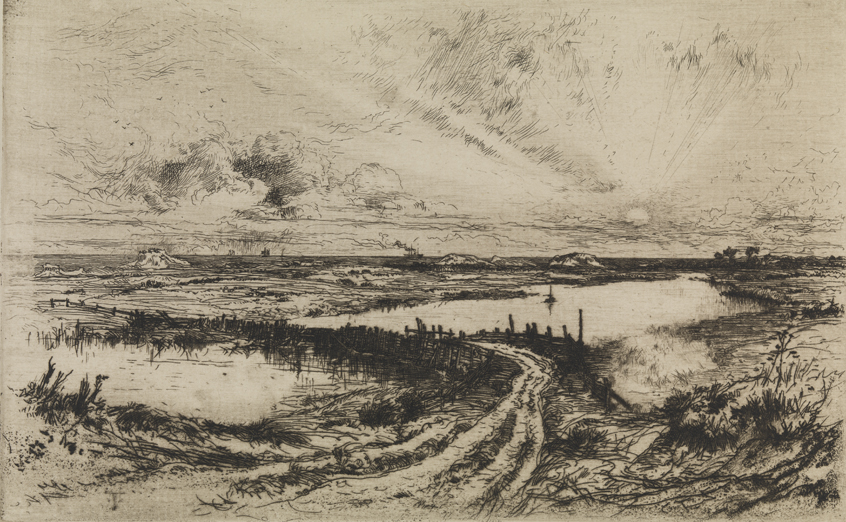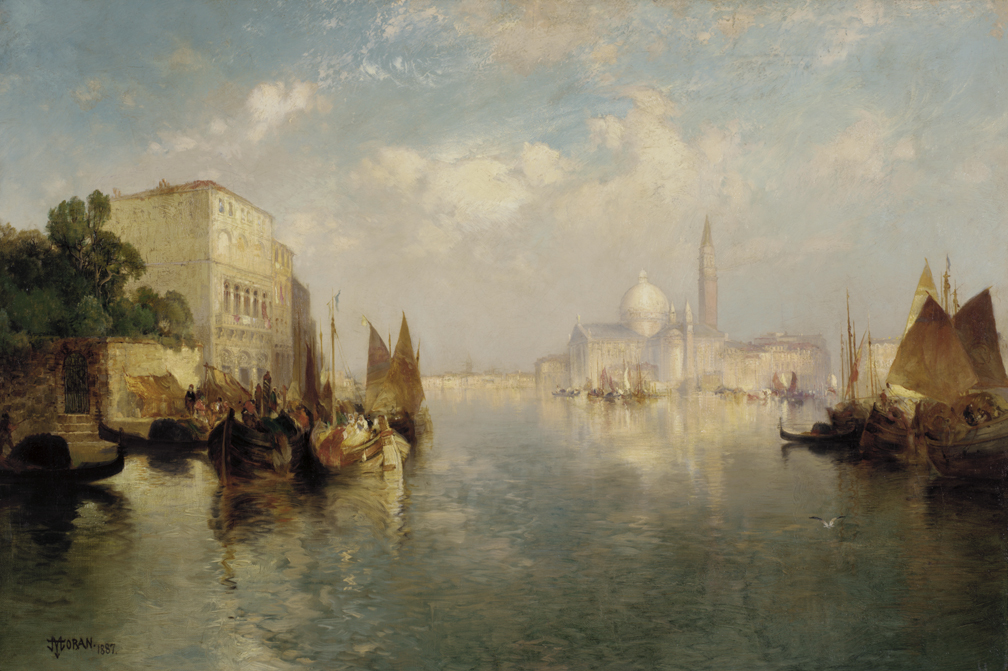
Venice
Thomas Moran
British-born Thomas Moran is the best-known member of a family of artists active in America in the mid-and late nineteenth century. Apprenticed as a teenager to the Philadelphia engravers Scattergood & Telfer, Moran developed a successful career as an illustrator for popular magazines and gift annuals. A commission from 'Scribner's' magazine to render scenes of the Wyoming Territory in summer 1871 gave Moran his first great success as an oil painter, transforming his numerous oil and watercolor sketches into the large-scale "Grand Canyon of the Yellowstone" (1872, U.S. Department of the Interior), the first landscape purchased by the government. In its dramatic size and grandeur, the painting reveals Moran's indebtedness to Joseph Mallard William Turner, whose works deeply marked Moran after his trip to England in 1862.
Turner's influence upon Moran is readily apparent in this painting, executed in 1887 after a visit to Italy the previous year. The shifting effects of light on water versus the solidity of the city's monumental architecture, as well as the color and pomp of its civic pageantry, have delighted and preoccupied such painters as Canaletto and Turner himself. Moran masterfully alternated areas of tight painting with looser brushwork to suggest the city's changeable atmosphere, from the masses of gaily bedecked boats in the foreground to the famous landmark of San Giorgio Maggiore that shimmers in the distant haze. The Academy also owns several graphic works by Moran's wife Mary, his brother Peter, and his nephews Edward Percy and John Leon.
Artist
Date of Birth
(1837-1926)
Date
1887
Medium
Oil on canvas
Dimensions
20 5/16 x 30 1/16 in. (51.6 x 76.4 cm.)
Accession #
1923.9.3
Credit Line
Gift of Mrs. Edward H. Coates (The Edward H. Coates Memorial Collection)
Copyright
No known copyright restrictions
Category
Subject
We're so excited you're planning to visit PAFA!
Make time for art — visit us Thursday to Sunday.
Before reserving your tickets, please review helpful information about museum hours, accessibility, building access, and special admission programs.
If you have any questions, feel free to reach out to us at visitorservices@pafa.org — we’d love to help!
